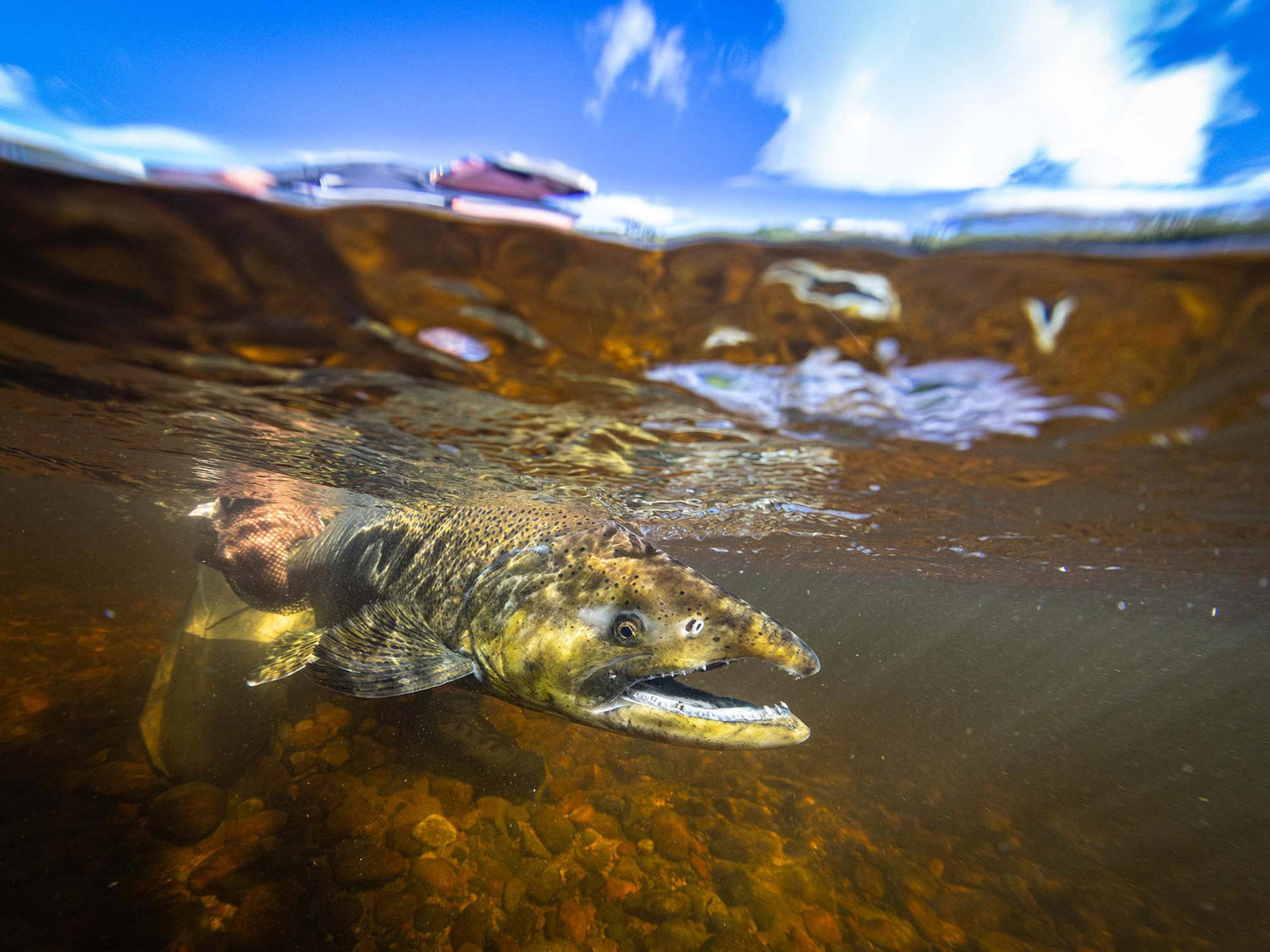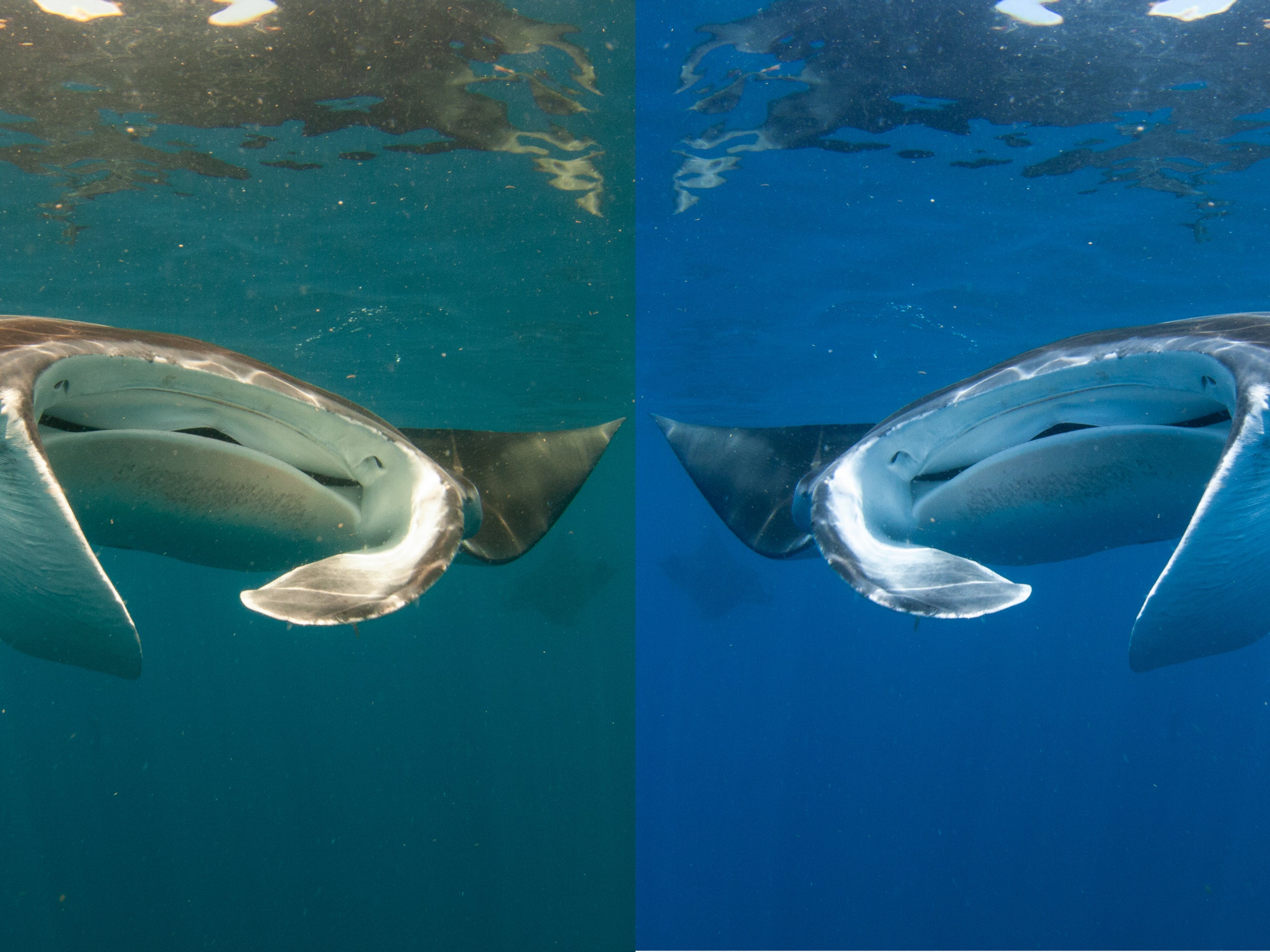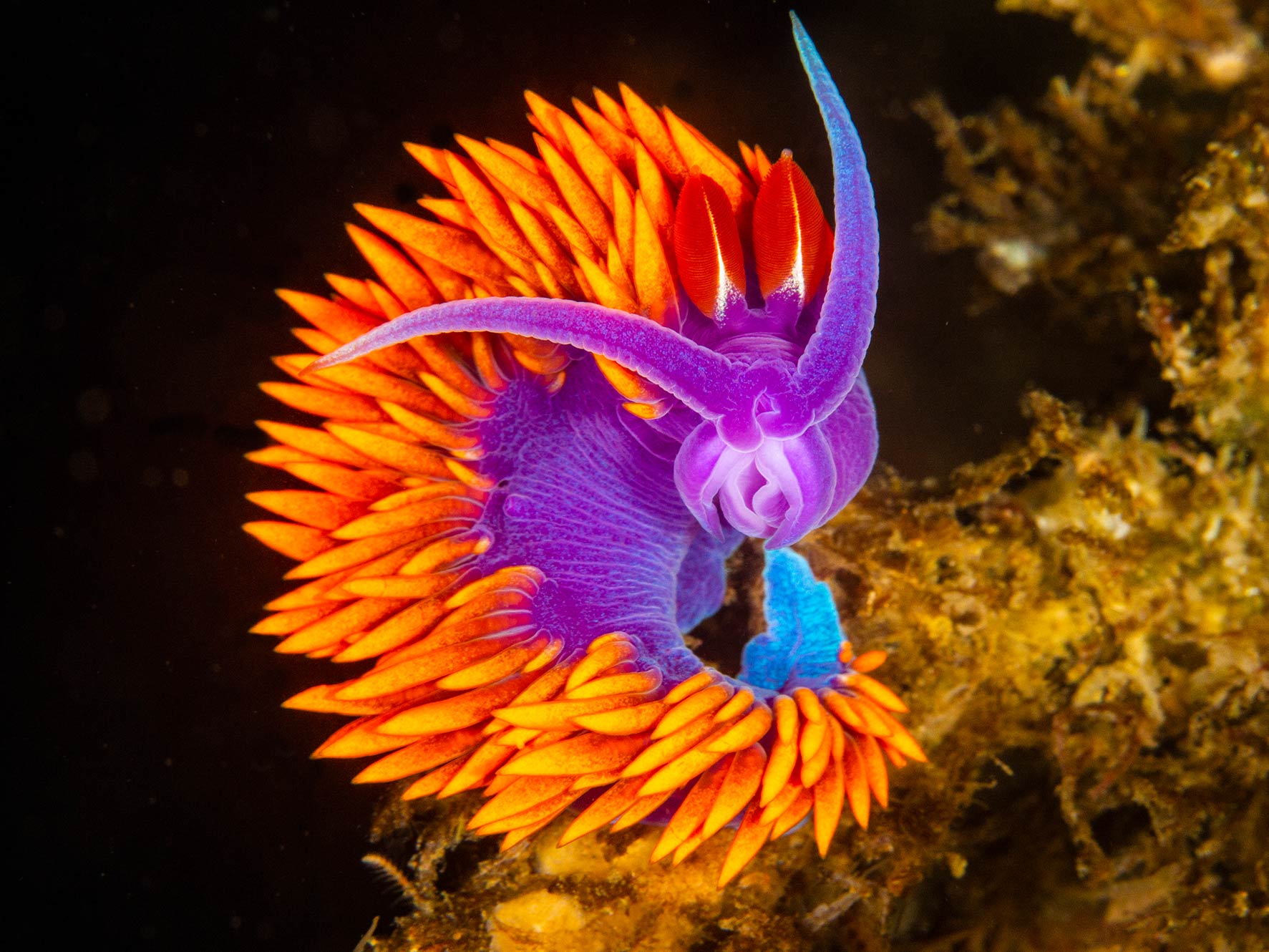By Steve Miller
Natural salmon runs have occurred in the Pacific Northwest and Alaska for thousands of years, some of these river systems offer great diving and snorkeling photography, and possibly some bear! Most of these images however, are from the Garden River near Sault Ste. Marie in Canada. This is private reservation land, we coordinated our visit with Ben's Bait and Tackle. The ability to camp and park near the river allowed us to carry a housing for the Canon R5 with the Canon 8-15mm fisheye lens.

Pink salmon arrive in larger numbers than the kings, the males have a distinctive humped back. © Steve Miller
Since the 1800’s various types of salmon have been “planted” in the Great Lakes. These were salt water fish that are born in streams, live in the ocean, then return to the same streams to breed and then die. Eventually these salmon adapted to live their lives without ever being in salt water.
Fly fisherman chase these “runs” which come seasonally based on species. At these times the (often very clear) streams and rivers that feed the lakes fill with thousands of spawning salmon. Considered by some as an invasive species, others value the success of this program - which has been more or less abandoned since the 1960’s - as a boon to fishermen.

King salmon - locally called Chinook - approaching 30lbs come up the Garden River each autumn to spawn. © Steve Miller
Equipment
Large colorful fish, clear water, and sunny fall days while the leaves are turning make a compelling recipe for underwater photography. But there are some challenges to fly fishing photography that are different from diving for your images. The physical size of your system is the most obvious.
If you are committed to shooting instead of fishing it isn’t too bad. If you are hiking, a compact camera like the Olympus TG-6 will fit in a vest without weighing you down. Most of these images were shot with the Canon R5 and the Canon 8-15mm fisheye, practical only because the distance to the river was short and we could just leave our gear on shore while fishing…mildly practical.

These rainbow trout were shot with an Olympus TG-6 on a stick in time-lapse mode at 1 frame per second. © Steve Miller
Techniques
The easiest way to capture salmon images is while they are being “revived” after being caught and then released. The fish must be facing upstream, so the key is to make sure the sun is on the fish, and that your shadow is not over her. From there you can shoot classic close-focus-wide-angle images with your dome port inches away from the fish.
Flash would be wonderful, but is not very practical to carry. We found a modeling light (around 1000 lumens) mounted on a strobe arm and pointed at their face gave better detail, but this depends on where your sun is. A friend holding a reflector would be perfect, but now you would need three people to pull off the image.

The female pink salmon looks much like a rainbow trout. © Steve Miller
If you are motivated to capture the fish in a more natural frame, you will need to get your camera away from you. The housing won't bother the fish after a few minutes, but you will. If you don't mind a little DIY you can attach your housing arms to a long pole and shoot remotely. The fish will act naturally as long as you are around 10 feet away. They will even “hold” behind a resting camera housing that breaks the current.
But how do I trigger the shutter? The simplest way would be to simply attach a string to the shutter release and give it a tug when you want to shoot. You may need to extend the shutter release control with a piece of plastic or a popsicle stick to give leverage.
Another solution would be to simply set your camera on interval shooting (time-lapse), weigh the housing - with or without a tripod - to the bottom (shallow!) in an area where the salmon like to congregate (called “beds” or “rubs” as this is where they spawn). You can set your camera to have a delay before the shooting session begins, 5 minutes should give the water time to clear out from setting the housing down, and allow the fish to normalize to its presence. From there the camera will take an image every second, five seconds, or every minute, depending on how long you want to leave it in place. Capture hundreds of images this way, and a couple should be cool!

f/5.6 • 1/125 • ISO 400 © Steve Miller
The most sophisticated solution would be to control the camera remotely with a mobile device, like an iPhone or iPad. There are apps that allow this based on the camera model, and you can control the camera from a good distance away.
This signal will not go through water so the housing cannot be totally submerged. In our experience, if even a small section of the housing or the dome are sticking out of the water, the signal will carry to your phone or tablet.
A final choice, and perhaps the best, would be to get in and swim with the salmon. When you lay in the water snorkeling, salmon - and trout - seem to be less wary than when you are wading. Serious photographers will have a guide around for this, in case a bear were to happen along looking for easy treats from the dead salmon that are invariably around these runs.

An added bonus to this type of trip are the typically picturesque landscapes topside. © Steve Miller
 Ambassador Steve Miller has been a passionate teacher of underwater photography since 1980. In addition to creating aspirational photos as an ambassador, he leads the Ikelite Photo School, conducts equipment testing, contributes content and photography, represents us at dive shows and events, provides one-on-one photo advice to customers, and participates in product research and development. Steve also works as a Guest Experience Manager for the Wakatobi Dive Resort in Indonesia. In his "free" time he busies himself tweaking his very own Backyard Underwater Photo Studio which he's built for testing equipment and techniques. Read more...
Ambassador Steve Miller has been a passionate teacher of underwater photography since 1980. In addition to creating aspirational photos as an ambassador, he leads the Ikelite Photo School, conducts equipment testing, contributes content and photography, represents us at dive shows and events, provides one-on-one photo advice to customers, and participates in product research and development. Steve also works as a Guest Experience Manager for the Wakatobi Dive Resort in Indonesia. In his "free" time he busies himself tweaking his very own Backyard Underwater Photo Studio which he's built for testing equipment and techniques. Read more...
Additional Reading
Photographing the Salmon Run Underwater in Canada
Close Focus Wide Angle In Depth
Capturing the Elusive Mouth Brooding Jawfish
The Wild Coast | Sardine Run, Sharks, and South Africa
Iceland | Diving Between Two Continents













